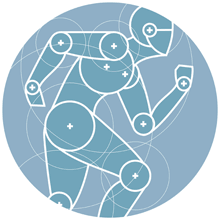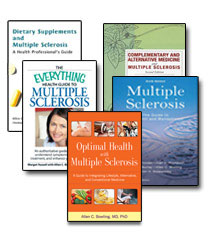At the turn of the 20th century, a modified version of osteopathic and chiropractic medicine was developed. This type of treatment, called craniosacral therapy, craniopathy, or cranial osteopathy, involves bone manipulation similar to both chiropractic and osteopathic medicine. In the 1970s, Dr. John Upledger developed a newer version of craniosacral therapy, which he still teaches to health-care providers at the Upledger Institute in Florida.
Treatment Approach
Craniosacral therapy uses massage focused on the bones of the pelvis, spine, and skull. The goal of treatment is to facilitate a smoother flow of cerebrospinal fluid (CSF). CSF is a clear, watery liquid that surrounds the central nervous system, which is made up of the brain and spinal cord. Craniosacral therapy claims that free-flowing CSF allows for optimal function of the nervous system, immune system, and many other systems in the body. Therapists in this field also claim an ability to detect a rhythmic movement of bones in the skull.
Evaluation in MS and Other Conditions
The conventional understanding of the skeletal and nervous system physiology does not correspond to the theories put forth by craniosacral therapy. Impaired CSF flow, according to all evidence available, is not a common cause of disease. Furthermore, no strong evidence indicates that craniosacral therapy is a useful tool for altering CSF flow. Craniosacral therapy rhythm has not been found to be a meaningful diagnostic tool, nor is it clear whether practitioners can reliably detect it.
There is very little clinical research evaluating the efficacy of craniosacral therapy. It has not been studied for treating MS. Dr. Upledger writes that craniosacral therapy has only had “moderate success” in treating people with MS. He attributes a lack of “optimal results” in treatment to “a rather significant emotional component” or “emotional resistance” that allegedly accompanies MS. Based largely on anecdotal evidence, craniosacral therapy has claimed to be effective for treating brain and spinal cord injury, seizures, and pain. These claims have not been evaluated in clinical trials.
Adverse Effects
During infancy and childhood, the skull bones are still developing. In these populations, craniosacral manipulation could result in injury and should therefore be avoided. People with brain aneurysms, bleeding in the brain, or increased intracranial pressure should also avoid craniosacral therapy. According to practitioners, treatment may also amplify the effects of epileptic, psychiatric, and diabetic medications.
In one study of people with mild head injury, those treated reported mild headaches. Approximately five percent of those treated reported spasticity and dizziness – symptoms that may already be present with MS.
Summary
The theory behind craniosacral therapy is inconsistent with conventional understanding of nervous system physiology. Efficacy claims have not been evaluated in clinical trials, and about 1 in 20 people treated experience side effects.
References and Additional Reading
Books
Bowling AC. Complementary and Alternative Medicine and Multiple Sclerosis. New York: Demos Medical Publishing, 2007, pp. 80-82.
Cassileth BR. The Alternative Medicine Handbook. New York: W.W. Norton, 1998, pp. 222–225.
Ernst E, ed. The Desktop Guide to Complementary and Alternative Medicine: An Evidence-Based Approach. Edinburgh: Mosby, 2001, pp. 48–50.
Navarra T. The Encyclopedia of Complementary and Alternative Medicine. New York: Checkmark Books. 2005, p. 31.
Upledger JE. Craniosacral Therapy. Berkeley, CA: North Atlantic Books, 2001.
Journal Articles
Green C, Martin CW, Bassett K, et al. A systematic review of craniosacral therapy: biological plausibility, assessment reliability and clinical effectiveness. Compl Ther Med 1999;7:201–207.
Greenman PE, McPartland JM. Cranial findings and iatrogenesis from craniosacra manipulation in patients with traumatic brain syndrome. J Am Osteopath Assoc 1995;95:182–188, 191–192.
Hanten WP, Dawson DD, Iwata M, et al. Craniosacral rhythm: reliability and relationships with cardiac and respiratory rates. J Orthoped Sports Phys Ther 1998;27:213–218.
Moran RW, Gibbons P. Intraexaminer and interexaminer reliability for palpation ofthe cranial rhythmic impulse at the head and sacrum. J Manipulative Physiol Ther 2001;24:183–190.
Rogers JS, Witt PL, Gross MT, et al. Simultaneous palpation for the cranialsacral rate at the head and feet: intrarater and interrater reliability and rate comparisons. Phys Ther 1998;78:1175–1185.






